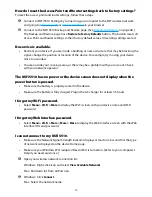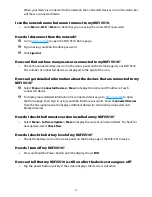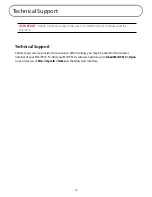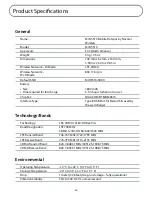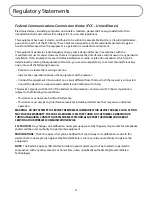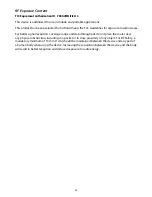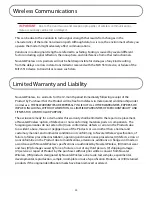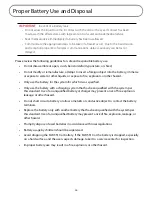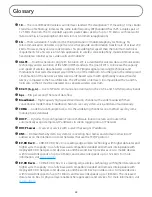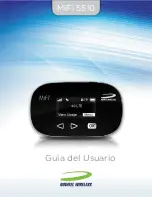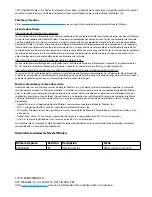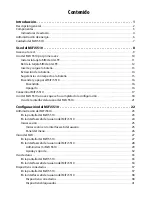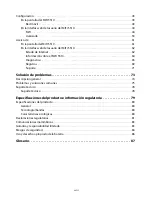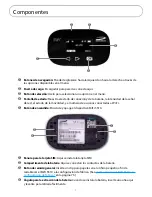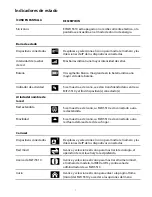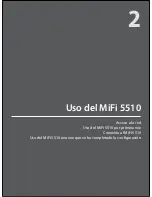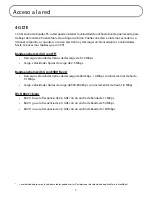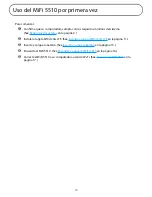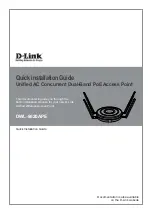
90
●
Port Number
— A 16-bit number used by the TCP and UDP protocols to direct traffic on a TCP/IP
host. Certain port numbers are standard for common applications.
●
PRL
— Preferred Roaming List. A list that your wireless phone or device uses to determine which
networks to connect with when you are roaming. (Network operator specific).
●
Protocol
— A standard that enables connection, communication, and data transfer between
computing endpoints.
●
Proxy
— A firewall mechanism that replaces the IP address of a host on the internal (protected)
network with its own IP address for all traffic passing through it.
●
Router
— A device that directs traffic from one network to another.
●
SIM
— Subscriber Identification Module. Found in LTE and GSM network technology, the SIM is a card
containing identification information for the subscriber and their account. The SIM card can be moved
to different devices.
●
SSID
— Service Set IDentifier. The name assigned to a Wi-Fi network.
●
TCP/IP
— Transmission Control Protocol/Internet Protocol. The set of communications protocols used
for the Internet and other similar networks.
●
USB
— Universal Serial Bus. A connection type for computing device peripherals such as a printer,
mobile modem, etc. USB connectors may be used for data transfer or charging.
●
USB Port Types
— The USB ports on computers and hubs have a rectangular Type A socket, and
peripheral devices have a cable with a Type A plug. Peripherals that do not have an attached cable
have a square Type B socket on the device and a separate cable with a Type A and Type B plug. Ports
and connectors are available in different sizes (for example, standard, mini, and micro).
●
VPN
— Virtual Private Network. A secure private network that runs over the public Internet.
Commonly used to connect to an office network from elsewhere.
●
WCDMA
— Wideband Code Division Multiple Access. An air interface standard found in 3G mobile
telecommunications networks. The most-commonly used member of the UMTS family.
●
WWAN
— Wireless Wide Area Network. A public network that extends beyond architectural,
geographical, or political boundaries (unlike a LAN, which is usually a private network located within a
room, building, or other limited area).
●
Wi-Fi
— Wireless Fidelity. Any system that uses the 802.11 standard developed and released in 1997 by
the IEEE.
●
Wi-Fi Client
— A wireless device that connects to the Internet via Wi-Fi.
●
WPA/WPA2
— Wi-Fi Protected Access. A security protocol for wireless 802.11 networks from the Wi-Fi
Alliance.
Summary of Contents for MiFi 5510
Page 1: ...MiFi 5510 User Guide ...
Page 5: ...Overview Components Power Management Caring for Your MiFi 5510 Getting Started 1 ...
Page 77: ...Overview Common Problems and Solutions Technical Support Troubleshooting 4 ...
Page 91: ...Glossary 6 ...
Page 95: ...MiFi 5510 Guia del Usuario ...
Page 171: ...Descripción general Problemas y soluciones comunes Soporte técnico Solución de problemas 4 ...
Page 185: ...Glosario 6 ...

